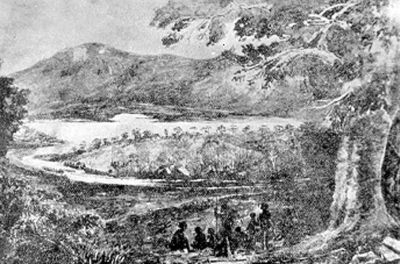 |
 |
|
Aboriginal Land Rights
In 1977 the Tasmanian Aboriginal Information Service (now the Tasmanian Aboriginal Centre) presented a petition to the Tasmanian parliament asking for land rights. The Aboriginal land claim asked for the return to Aboriginal ownership of all sacred sites, particularly those containing rock carvings; Wybalenna settlement on Flinders Island, the main settlement of the Tasmanian Aborigines who were moved there in the 1830s; all muttonbird islands, particularly Big Dog and Babel Island, to form the basis of a viable muttonbird industry; Cape Barren Island; Cape Grim, the site of a massacre in 1830; crown land not being used by Europeans; and compensation for the dispossession of land in Tasmania. After years of lobbying by the Aboriginal community, in 1995 the Aboriginal Lands Act acknowledged the dispossession of Tasmania's Indigenous people, and recognised certain rights. The Tasmanian government returned to the Aboriginal community thirteen parcels of land: in the Furneaux Group, Babel, Great Dog, Mount Chappell, Badger and Cape Barren islands; in the north-west, Steep Island and Mount Cameron West with its rock carvings; in the west and far south, Kutikina Cave, Ballawinne Cave and Wargata Mina; and in the south-east, Risdon Cove, site of the 1804 massacre, and Oyster Cove, where the remaining Aborigines were moved from Wybalenna in 1847. The Act provided for an elected Aboriginal Land Council to own and manage these lands. Aboriginal activist Michael Mansell pointed out that the land returned comprised under 0.001 percent of Tasmania. In 2001, a bill to return over 50,00 hectares of land (mainly Cape Barren Island, Clarke Island and Goose Island) to the Aboriginal community was passed by the House of Assembly but rejected by the Legislative Council; in 2004 the bill was rejected again. Further reading: www.discovertasmania.com; www.foundingdocs.gov.au; www.kooriweb.org. Alison Alexander |
Copyright 2006, Centre for Tasmanian Historical Studies |
